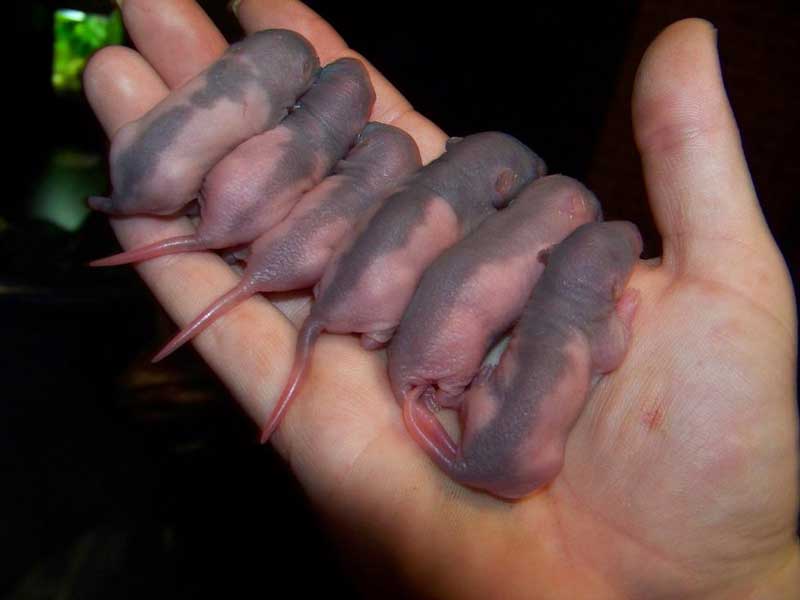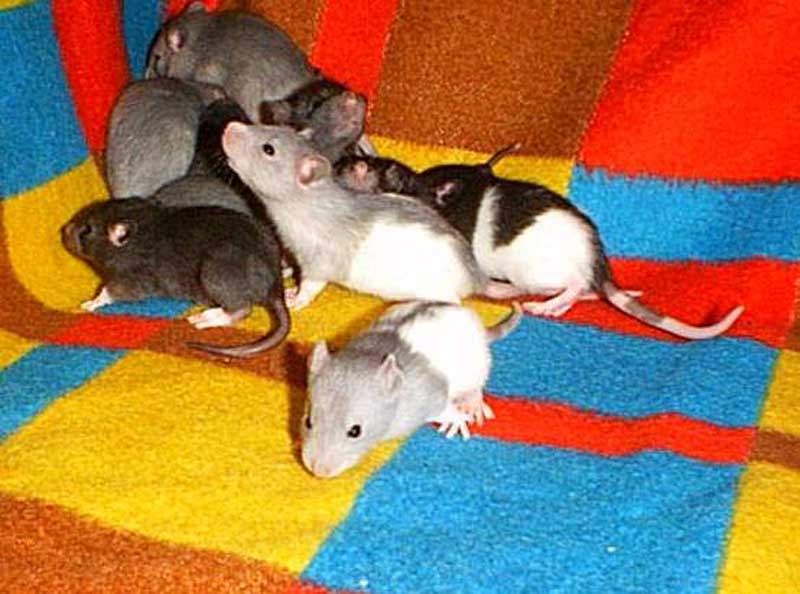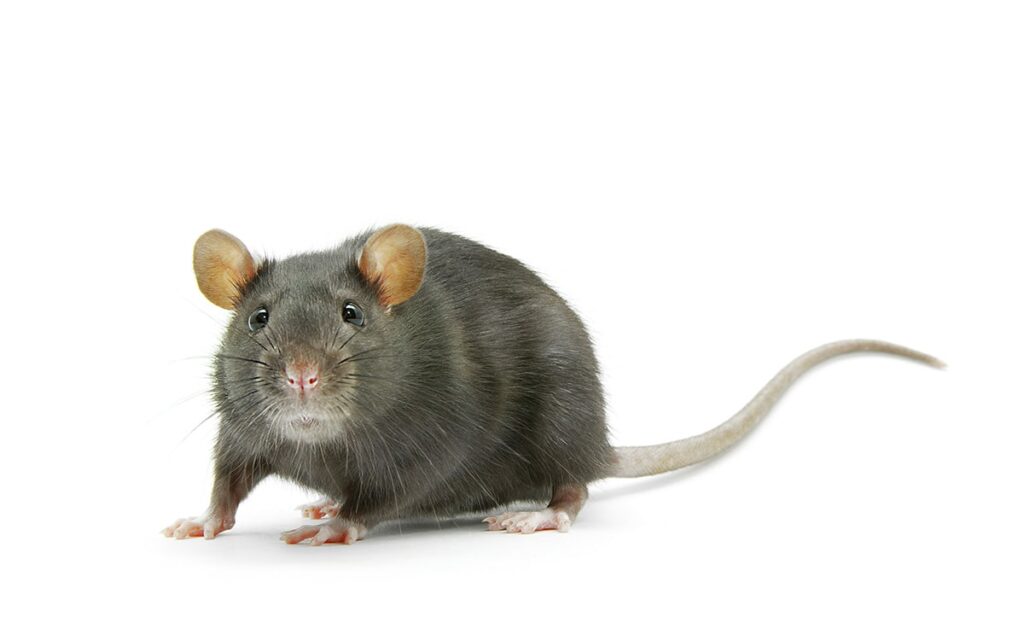- Water: A rat can survive without water for longer than a camel
- Survival: A rat can tread water for up to 3 days and also survive being flushed down the toilet – and it can find its way up the building by the same route it was flushed out of!
- Orientation: Rats have a good sense of direction; once they learn a route, they don’t forget it
- Spawn: In just 1 year, a pair of rats (brown rats) and their offspring can grow to 2,000 rats
- Fall: A rat can fall 15 meters and land unharmed
- Gender: A rule of thumb for telling the difference between male and female rats is that males are generally larger and have more coarse fur than females. Female rats are generally more active and playful than males
- Rat-baiting: In the early 19th century, the sport of rat-baiting was very popular in England. The sport involved one man or dog being set to fight hundreds of rats. The record holder was the bull terrier ‘Jacko’, who in 1862 killed 100 rats in 5 minutes and 28 seconds
- Rat tails: Rats’ tails are used for balance and communication. Rats can also contract and dilate the blood vessels in their tails, regulating their body temperature (they don’t sweat like humans)
- Disease spreaders: Rats have long been considered disease spreaders by humans. There are more than 10 diseases that rats have helped spread among humans. The worst of these was the bubonic plague in medieval Europe
- Pests: Apart from spreading diseases, we also consider rats to be pests, destroying pipes, buildings, food, etc. In northeast India, every 48 years, two states are hit by a cyclical phenomenon called ‘Mautam’. Here, the states are overrun by hungry rats that eat everything in their path in what is referred to as a ‘rat flood’.

Fact: In 1 year, a pair of rats and their offspring can grow to 2,000 rats
Social behavior of rats
- Social animals: Rats are highly social animals that enjoy the company of other rats as well as humans (the latter only applies to domestic rats)
- Lonely: Without company, rats tend to become lonely and depressed
- Care: Rats take care of sick and injured team members
- Peer pressure: Rats succumb to peer pressure, just like humans. Brown rats tend to disregard personal experience to copy the behavior of their peers. The urge to conform is so strong that they will even eat inedible food if they are with other rats that eat it
- Cleanliness: Rats are very clean animals that spend several hours a day grooming themselves and their group members
More facts about rats
- Swimming: Rats can swim and most of them enjoy it
- Teeth: Rats’ teeth grow 11 – 14 cm per year. Rats keep them down by constantly gnawing on things around them (including cement, bricks, wood, pipes, animals, etc.)
- Conflict-averse: Rats are very curious but conflict-averse; they almost always choose to flee when faced with a potential threat
- Mice and rats: In biology, rats are distinguished from mice by their size. They are considered two different genera, but belong to the same family and subfamily, and are thus very closely related
- Root species: There are 56 known species of rats in the world. Of these, the brown rat (Rattus norvegicus) and the black rat (Rattus rattus) are the most common and widespread
- Activity: Although rats are usually considered nocturnal, they are most active for a few hours around dusk – the rest of the day is spent being less active and sleeping
- Age: Pet rats typically live 2-3 years

Fact: Rats are highly social; they care for sick group members and also get lonely if they live alone
The rat and man
- Chinese zodiac signs: The rat is the first of the twelve animals in the Chinese zodiac. Children born under this sign are – according to Chinese astrology – creative, intelligent, honest, ambitious and generous
- The Romans: For the ancient Romans, the rat was a sign of good luck, and in China today the rat is a sign of wealth
- TV: Rats have appeared in over 400 movies and participated in close to 100 TV series
- Root temple: In the city of Deshnoke (India), there is a Hindu temple dedicated to the rat goddess Karni Mata. The temple houses more than 20,000 rats and is a tourist attraction!
- Pets: Although the facts about when and how rats became human pets are not entirely clear, the most widely accepted theory is that it started with rat catchers in the 19th century; they were paid by the authorities to catch and kill rats, but to keep their business going, they started keeping and breeding rats. In doing so, rat catchers realized how intelligent and loyal rats can be; the rat’s life as a pet had begun


